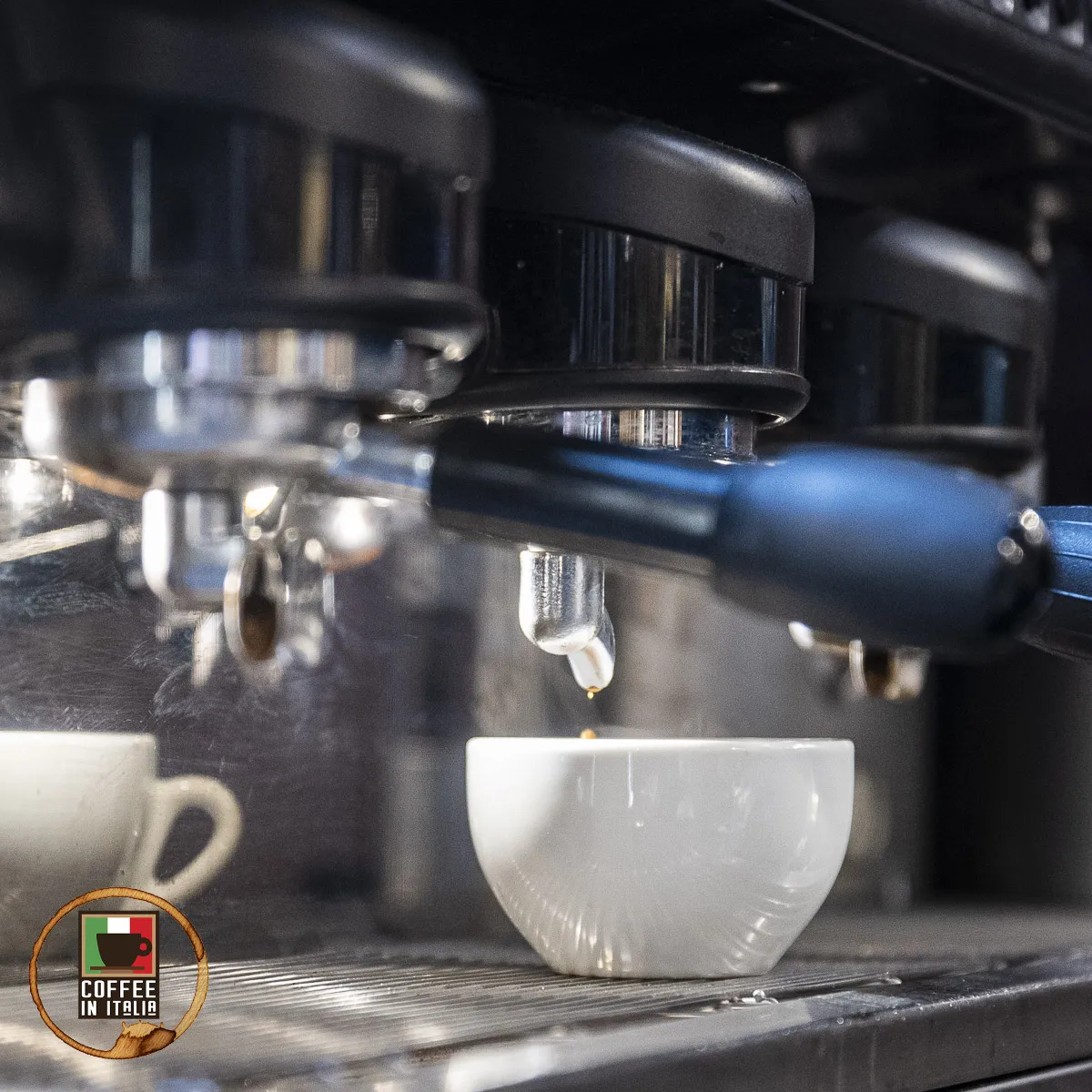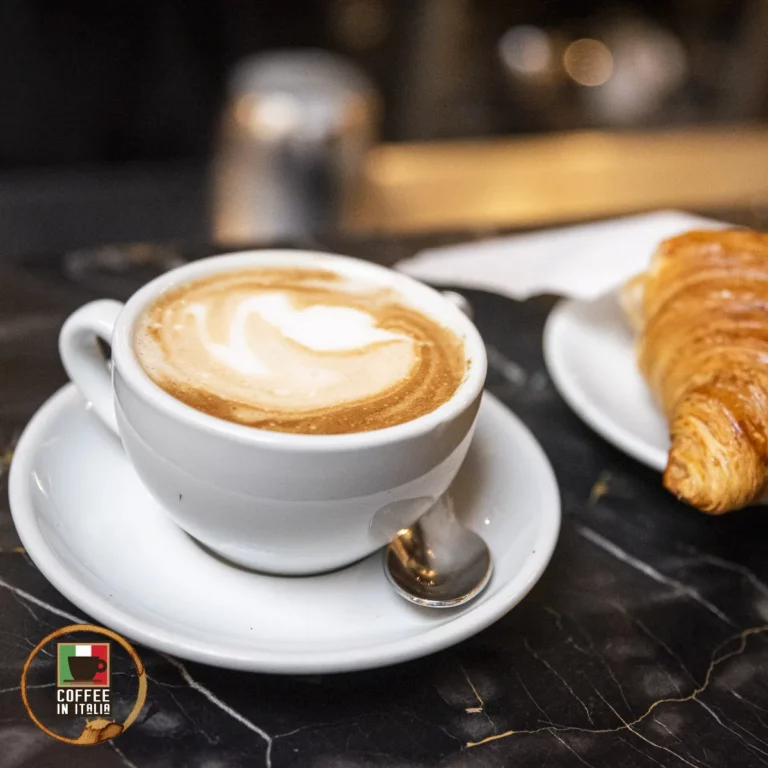Where Do Italians Get Their Coffee In The Morning?
Is it from a bar, a restaurant, a store or even a museum? Knowing “Where do Italians get their coffee?” will guide you through Italian coffee culture.

Thankfully for all of us, Italy is synonymous with coffee and the beverage is deeply woven into the fabric of its culture. From a quick espresso at a bustling bar on the way to the office to carefully selected beans at an artisanal roaster, coffee is more than just a drink, it’s a ritual, a social glue and a source of national pride.
But where exactly do Italians get their coffee in different situations, like in the morning at home, on the weekends, during the workday or in the evenings? The answers span a variety of points of sale with each offering its unique experience and selection.

Italian Coffee Culture
Before getting into the specifics of where Italians source their coffee, it’s essential to understand the cultural context. Coffee is not merely a caffeinated beverage in Italy, it’s a way of life.
Italians have perfected the art of brewing coffee and terms like espresso and cappuccino are central to their daily lexicon. Espresso is the cornerstone of Italian coffee culture and is enjoyed throughout the day. Cappuccino, on the other hand, is traditionally reserved for mornings. Whether consumed solo or in the company of friends, coffee holds a sacred place in the Italian routine.

Traditional Italian Coffee Venues
Bars (Cafés)
In this case, when you read Bars, don’t think: “Pub”, but think coffee bar or coffee shop. The quintessential spot for coffee in Italy is the bar, which functions as a hub of social interaction and routine. Unlike in other countries, where sitting down for a leisurely coffee is common, Italians often drink their coffee standing at the counter.
At a bar in the morning, the most popular order is espresso, served in a tiny cup and consumed in a matter of seconds. Other options include a macchiato (an espresso “stained” with a dash of milk) and a cappuccino. Be careful, because a cappuccino is rarely ordered after 11:00AM. The atmosphere at bars is lively and communal, with regular patrons forming relationships with baristas who often know their orders by heart.

Restaurants
While bars dominate morning and mid-day coffee culture, restaurants play a key role in the evening. Coffee at a restaurant is typically consumed as the end to a delicious meal. The options are more limited, focusing on espresso or a simple macchiato. Milk-based drinks like cappuccinos are considered inappropriate after meals because of their perceived poor “digestibility”.
Local Grocery Stores
For those who prefer making coffee at home, grocery stores are a primary source. Supermarkets in Italy offer a wide range of pre-packaged ground coffee and whole beans from brands like Lavazza, Illy, and Kimbo. There are also regional or local coffees that you might only find near where you live and not across the country.

In addition to the ground or whole-bean coffees, you will be able to buy coffee in pods and capsules for your home machine. With the rise of capsule coffee machines like Nespresso, supermarkets also stock a variety of pods compatible with popular systems. These are ideal for convenience while still delivering a decent espresso at home.
While instant coffee is less popular among Italians, it’s available in grocery stores for those seeking a quick and easy option. Specialty products like caffè d’orzo (barley coffee) and decaffeinated blends also cater to niche tastes or dietary preferences.
Independent Coffee Roasters
For coffee enthusiasts, independent roasters are the go-to destination. These shops focus on sourcing high-quality beans, often emphasizing the origins and roasting techniques. Artisanal roasters offer a more personalized experience, with the option to create custom blends tailored to individual tastes.
In Italy, you can easily find these independent roasters in most larger cities. They are definitely worth a try, but in my experience, they aren’t as popular as the local Bar, which limits turnover of the inventory and risks “old” or stale coffee. It is still worth a try, however.

Specialty Coffee Shops
In recent years, Italy has seen a rise in third-wave coffee culture, particularly in cities like Milan and Rome. Specialty coffee shops now offer brewing methods beyond the traditional espresso machine, such as pour-over, AeroPress, and cold brew. These venues appeal to a younger, more experimental crowd, blending Italy’s rich coffee heritage with modern trends.
Coffee Vending Machines
Coffee vending machines are a ubiquitous sight in Italy, found in workplaces, schools, and train stations. These machines offer a surprising variety of options, from basic espresso to cappuccino and even hot chocolate.
I have a bit of an obsession with these vending machines because of all the unexpected places you can find them. Some of my favorite locations include:
- Mounted inside a tour bus
- In a corner of the ancient Aurelian walls museum.
- On Palatine Hill among the ancient ruins.
While the quality may not rival that of a bar, vending machines provide an affordable and convenient alternative for a quick caffeine fix. Prices are typically low, making them a popular choice for those on the go.

Online Coffee Options
Selling Italian coffee online used to be a passion of ours, and I hope it will be again in the future. The digital age has transformed the way Italians (and Americans) source their coffee.
Many leading brands like Lavazza and Illy now offer robust e-commerce platforms, allowing customers to order coffee directly to their homes. Subscription services have also gained traction, providing regular deliveries of beans, ground coffee, or capsules tailored to specific preferences.
For those looking to explore international flavors or niche roasters, online marketplaces open up a world of possibilities.

Local And Regional Variations
While this doesn’t impact where to buy it, Italy’s coffee culture isn’t monolithic. Regional differences, as close as different parts of the same city, add fascinating nuances. In northern Italy, espresso blends tend to be milder and smoother, reflecting the region’s preference for subtler flavors.
In contrast, southern Italy favors stronger, darker roasts often enjoyed with added sweetness. These regional variations showcase the diversity of Italy’s coffee palate and highlight how deeply ingrained coffee is in the country’s identity.
Now You Know Where
Where do Italians get their coffee? Italians have an array of options for sourcing their coffee, each suited to different tastes, lifestyles, and moments of the day. From the vibrant atmosphere of a local bar to the carefully curated beans of an artisanal roaster, coffee in Italy is more than a beverage, it’s an expression of culture and tradition.

Whether standing at a counter for a quick espresso or savoring a cup brewed at home, Italians’ relationship with coffee is as diverse as it is enduring. As the world continues to embrace new coffee trends, Italy remains a testament to the timeless appeal of this cherished drink.
If you are interested in reading more about Italian coffee, please take a look at these related articles:
- What Is The Best Italian Coffee? A Comprehensive Guide.
- Your Complete Guide To What Coffee Is Popular In Italy.
- Authentic illy Italian Coffee For Your Espresso Experience.
- Why Drinking Lavazza Italian Coffee At Home Is A Must.
- Discovering Kimbo Italian Coffee Is Amazingly Delicious.
- What Coffee Do Italians Drink When Nobody Is Looking?
- Is A Cappuccino Or Espresso A Sustainable Coffee?
- Coffee Packaging Options For Making Italian Coffee at Home.
- The Best Italian Coffee Beans Result In The Best Roast.






